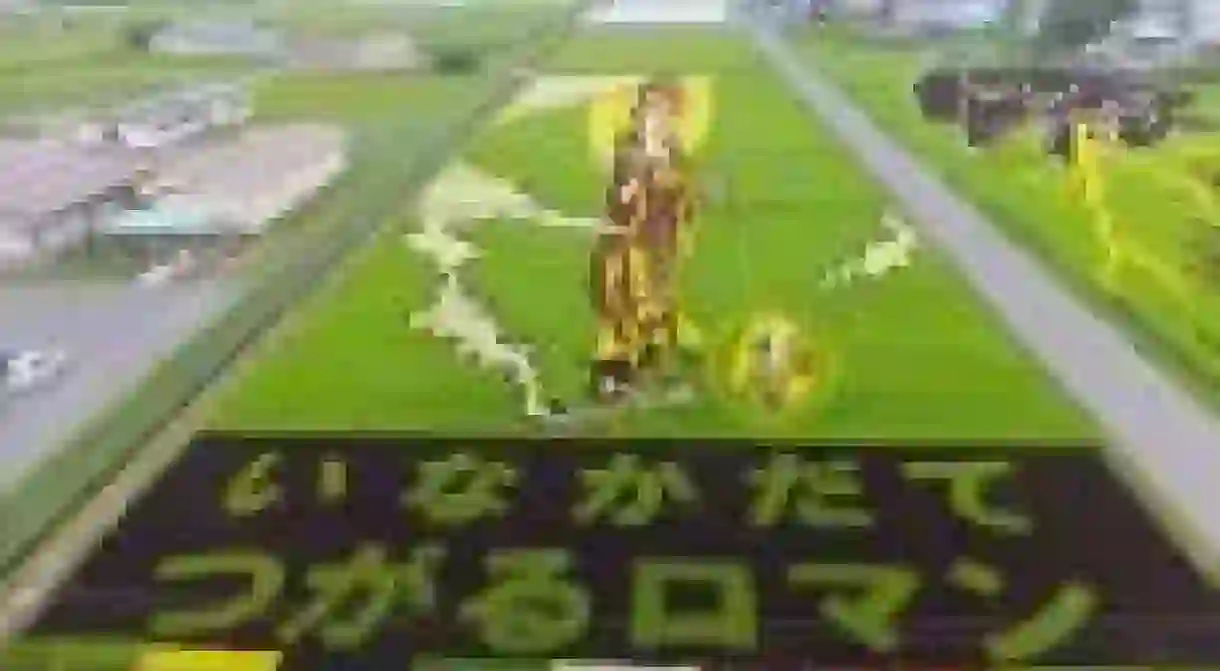Japan’s Rice Paddy Art: Revitalizing Inakadate

Inakadate, a village in Aomori at the north end of the Honshu mainland of Japan, has succeeded in revitalizing itself by creating a unique form of landscape art in their rice paddies. Today, their rice paddy art attracts over 200,000 visitors a year to this small village with a population of only 8,000.

For generations, people in Inakadate have been making their living by farming. In contrast to the relatively small population, Inakadate has a massive amount of farmland which accounts for more than half of the entire land of the village. Thanks to its fertile land, several times in recent years Inakadate has attained the highest yield from its rice crop amongst all the villages and towns in Japan.

As an attempt to transform such an abundant production of rice into a tourist attraction, the village tourism office started holding a “rice farming tour” in 1993. The tour offered participants an opportunity to experience the whole process of traditional rice farming from planting to reaping. To promote the tour, the tourism office drew huge characters of different colors onto the paddy at the back of the town hall. This was the beginning of Inakadate’s rice paddy art which has now become a core event for Inakadate’s tourism industry.
Rice paddy art is drawn by combining a range of colorful rice plants on a rice paddy canvas. Different kinds of rice naturally grow in different colors without any artificially colorant. For instance, Tsugaru Roman, which is the local rice of Inakadate, is green, Yukiasobi and Beniasobi are used for white and red shades, and other ancient strains of rice are used for purple and yellow.

At first, the Inakadate rice paddy artists started with simple patterns and images but the patterns have become far more complicated over the years, as they have become skillful enough to create elaborate images. In the last 20 years, they have recreated classic art pieces such as The Mona Lisa and Hokusai Katsushika’s Ukiyo-e, and have depicted historical figures including Marilyn Monroe and Napoleon as well as Japanese warriors.
Since all of the images are designed to be seen from an observation deck at the top of the town hall, a sketch needs to be precisely drawn in perspective. In order to make the image look perfect from the deck, the original image is designed in a vertically stretched form, taking the angle of people’s sight from there into account. To facilitate such a complicated design only by rice growing, planting and reaping are always done manually.

The creation of the rice paddy art in Inakadate starts from every June and goes on until September. Anyone can participate in the project by joining a rice farming tour. In the 20 years since the beginning of this unique art form, rice paddy art has not only become an important tourist attraction for local people but also a community event. In this sense, rice paddy art has revitalized the village by in bringing people from outside as well as enlivening local residents through their annual engagement in the project.
Following the success of Inakadate’s revitalization, a number of other villages and towns have started making and showing their own rice paddy art, and there are more than 100 spots that you can enjoy this unique landscape art in Japan these days.













